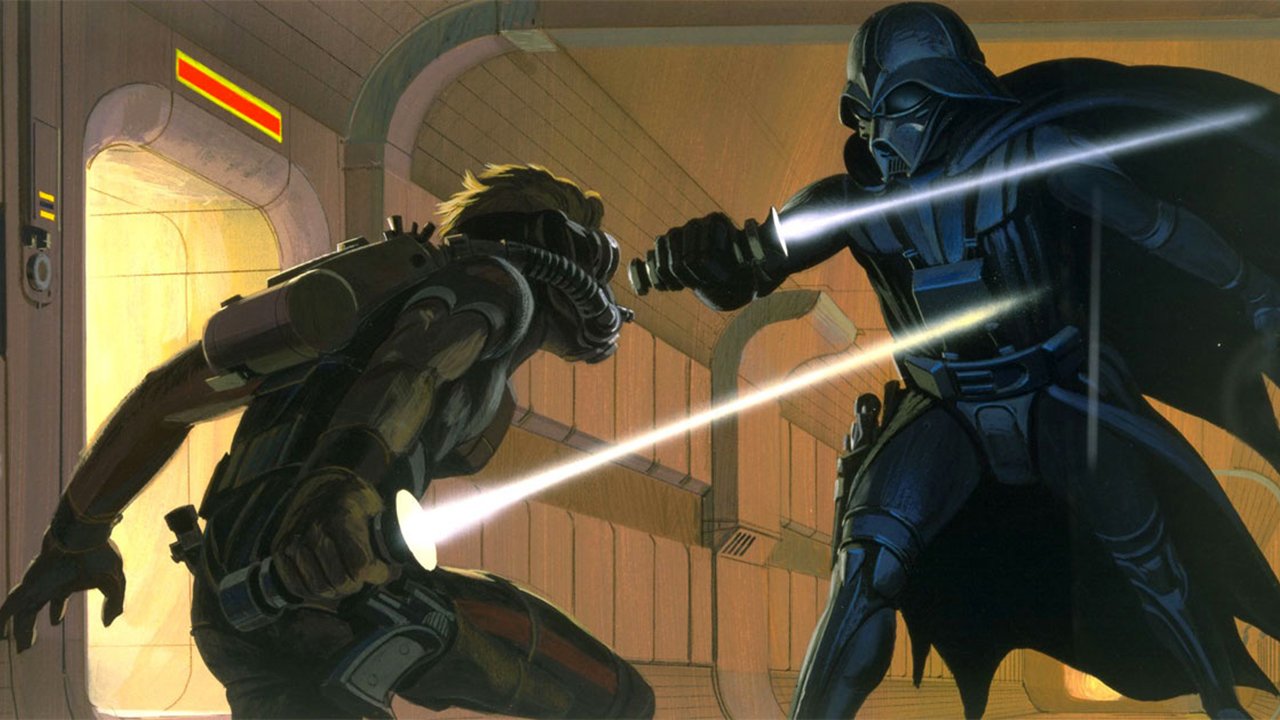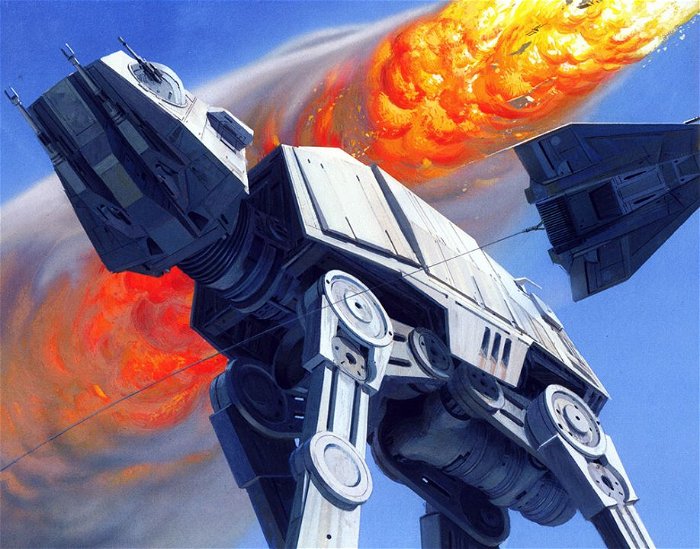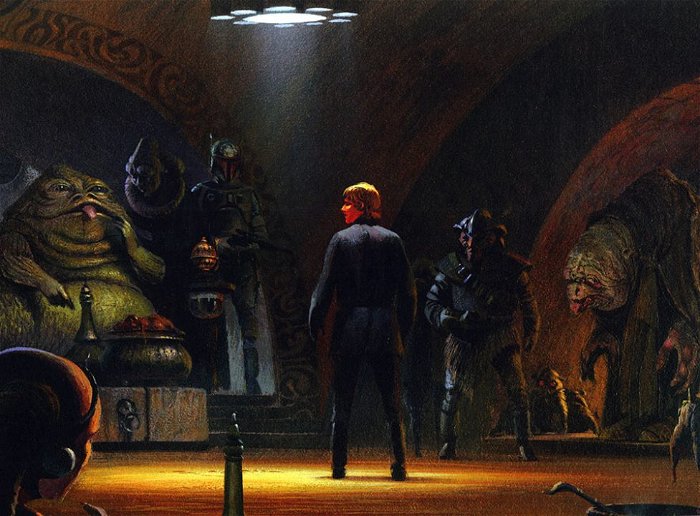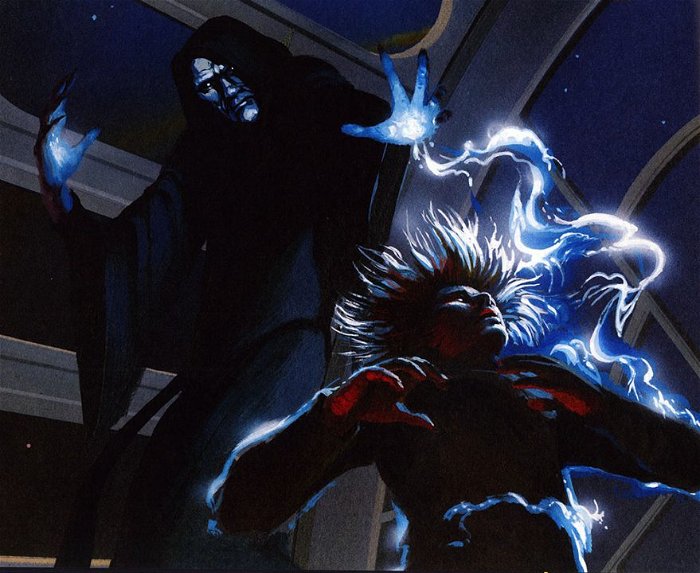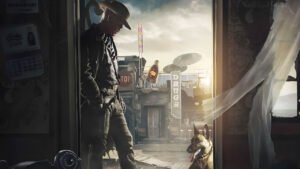We had a chance to sit down and chat with author Tony DiTerlizzi about his children’s book Star Wars: The Adventures of Luke Skywalker, Jedi Knight. The book follows Luke’s journey through the original Star Wars trilogy, and features beautiful art from the late Ralph McQuarrie, the innovative concept artist who helped bring to life the characters, creatures and alien vistas we all know and love.
Comics Gaming Magazine: Was this book your idea originally?
Tony DiTerlizzi: It was this time last year when the phone rang. On the caller ID it said Lucasfilm, and when the phone says Lucas you better pick it up. The folks there were fans of mine, which I was completely honoured and humbled by, and of course I am a huge Star Wars fan. They loved the kid’s books and picture books I had done and wondered if I could take Ralphs paintings and assemble them into a picture book for young readers.
CGM: What an opportunity; that art is where it all came from.
TD: It’s absolutely where it all came from. Ralph was one of the first artists that George hired and brought into the project. There were a couple other artists involved early on as well, Joe Johnston, John Mollo, but they were primarily working in pencils and markers doing a lot of character sketches and some prelim model building. But Ralph was the one, and really remained, throughout the entire trilogy, who took all those designs and stitched them together to make complete scenes. And then paint them with acrylic and wash. Who does that anymore?
CGM: Did you design the layout or were you given a stack of paintings and told to just go from there?
TD: To be honest, I thought they were going to give me maybe 20 paintings. I was familiar with a lot of his stuff, I had seen it over the years in the Art of Star Wars books and trading cards but I was not prepared for the 200 images that showed up and I was blown away, there were so many amazing images.
CGM: That must have been a blast just going through all that.
TD: It was a lot of sketches. I immediately called them back and said, “Tell me you guys are putting together a big coffee table book of all the art.” They’d be crazy not to. So hopefully they’ll do something like that in the future. My job was to sift through the artwork and then figure out what images absolutely needed to be in the book, what images wouldn’t make it, and then fill in the spaces with words.
CGM: Were you given a specific page count or did you boil that down yourself?
TD: Most picture books are 36-38 pages, so 64 pages is long. What you want to avoid is making it too wordy, because otherwise -speaking as the father of a seven-year-old- I know they will lose interest. As I placed the art down it was very much like taking three jigsaw puzzles, laying all the pieces down on a table and being told to make a new image out of these pieces. You don’t have to use every piece but try to make something new. It became very apparent to me what was rendered multiple times and what wasn’t rendered at all. For instance, there is no slave Leia, there is no Obi-Wan fighting Vader on the Death Star, there’s not a lot of Han… aside from Luke a lot of the main characters are not really seen. Anything that had a figure featured prominently in the painting I thought “this has got to be in the book”, in order to give it that human element.
CGM: Was it difficult to distill three movies into 64 pages? Did you want to give equal space to each movie?
TD: I aimed to keep it to 20 pages, or 10 spreads per film. I hadn’t actually watched the movies in several years, so I printed all the pieces and spread them on a table and thought, “Let me just sit down and write this by just looking at the art. Let the art trigger the scenes in the movie.” I wanted to see what I remembered from when I was a kid playing with my Star Wars toys and what scenes still get me excited when I think about the films. These are the ones that have got to be in this. As this went on what I also thought was that it had to focus primarily on Luke. So there are scenes I couldn’t do, like Han and Leia in the asteroid field, and even though Ralph painted these amazing scenes I had to make it Luke’s story.
CGM: On that note, I noticed you chose to open the book with a shot of Luke on Tatooine rather than the iconic scene at the beginning of the movie with Leia loading the droids into the escape hatch as Vader appears through the smoke and blaster fire.
TD: Well, A, There was no paintings of it and B, Luke wasn’t there. The story had to be done from Luke’s point of view. It adds a lot of mystery to the story, because unlike film, what the book has to do is make you want to turn the page. So there were some challenges, but hopefully in the end it retains the spirit and remains faithful to the films.
CGM: I think you captured the mystery and mysticism of the original movies well, something that was definitely lacking in the prequels. Is something you were aiming for?
TD: I was eight years old when the first film came out. It wasn’t until about ‘84 or ‘85 that they came out on videotape. Up until that point you couldn’t watch them at home. You might have been able to catch them on TV and the theatres would run them before the next one came out-
CGM: You would get one chance to see it and then it was on you to recreate them in your mind.
TD: Bingo. That’s what I’m driving at. You are living Star Wars through your imagination, through playing with your friends; looking at the art books, the trading cards, the comics. It existed in a very different place than something like Avatar or Pirates of the Caribbean, where you would be able to get the home version a month two after you saw it in theatres. It’s a very different world and I think that is why the mythology of Star Wars has had such a lasting power. It’s been ingrained in the minds of so many through imaginative play. I wanted to capture that feeling in the writing. I wanted it to feel like it did back in the 70s and 80s, when those films were so special you wanted to burn every minute into your brain because you didn’t know when you’d be able to see it again.
CGM: Was Luke always your favourite character?
TD: I loved Luke, I mean, who didn’t want to be Luke? I’ve always been a fan of all the monsters and creatures but it was always Luke. As years went by and I became a writer and author it started to become Obi-Wan. I remember reading the Hobbit a few years after I saw the first movie and I thought to myself “Man, Gandalf really reminds me of Obi-Wan.” I felt the same reading about King Arthur, thinking “This Merlin guy reminds of Gandalf, who reminds me of Obi-Wan.” When I do school presentations now I compare Obi-Wan to Dumbledore.
CGM: The archetypal wise, old mentor figure?
TD: That’s right, that’s exactly it. That introduced me to the Joseph Campbell approach to storytelling. The idea that the mythology has these characters that wear a certain mask. I became less interested in the hero and more interested in the supporting characters and what their roles are in the story.
CGM: You said you wanted to begin the writing process without being influenced by re-watching the movies right away. Did you end up going back after watching them and changing anything?
TD: After I had written the story I re-watched the films and read the screenplays, because I wanted the dialogue to be exact, but I also wanted to see what words George used to describe certain things: Did he call R2 and C3PO droids or did call them robots? I wanted to make sure the terminology was very similar to the original terminology that George used, with a nod towards what we use now. For instance, when the Emperor is using the dark side to electrocute Luke, George called it “Evil Lightning”. So part of me wanted to write “Luke was zapped by evil lightning”, but it seemed kind of hokey. For a movie maker, the short hand works, but ultimately we did change it.
CGM: We know Luke as a character now because he’s been around for nearly 40 years, but what qualities did you want to give him when you were writing him? Was there an underlying theme or philosophy you wanted to show with this book?
TD: I had to look at the many themes of the original trilogy and pick which one I really wanted to focus on. I also had to do this with two things in mind; the 5-8 year old reading, or having the book read to them, and the adult that was reading it to them who is a fan of the original movies.
So what I thought was interesting about Luke was that he is the quintessential orphan at the beginning of the film. He lives with his aunt and uncle, but unlike similar characters in the same vein, he actually gets his family back at the end. He gets his sister back, he gets his father back and redeems him, which is incredibly noble, and in a way he gets a brother in the form of Han. That’s what I wanted this story to be about, because to any child or parent, that’s what’s important to them. Family is a theme we can come together around. Luke longs for adventure, he goes from farm boy the greatest Jedi in the galaxy, but in the end the thing that is most important to him is that he saved his sister and his father. To me that seems so much more powerful than him being the last living Jedi.
Want to check out Star Wars: The Adventures of Luke Skywalker, Jedi Knight for yourself? Look below for your chance to win a copy.
